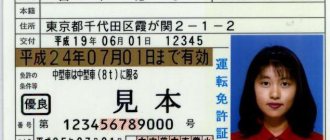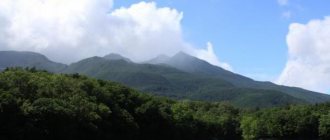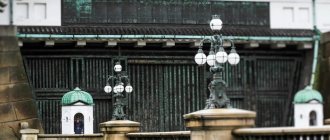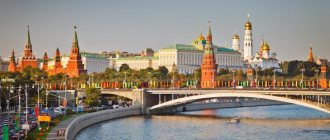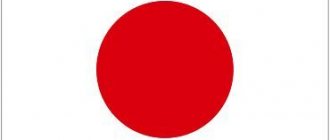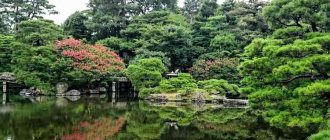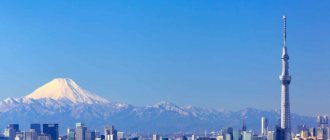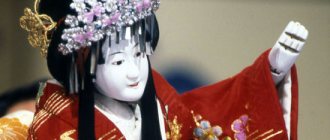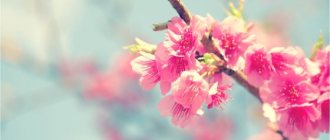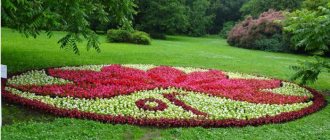The importance of the state in the modern world
The Land of the Rising Sun, as Japan is called, is a collection of islands that were inhabited about 42,000 years ago. The main occupations of the Japanese at that time were fishing, hunting and gathering. The state of Japan appeared in 250 AD. e. Throughout its history, it has had to endure fragmentation and war. Today it is a state with a highly developed economy, in terms of which it ranks second in the world.
The first name of the country – Yamato (1st millennium AD) – meant “highlanders”. Then it was called “Wa”, “Nippon”, the latter name is still used within the country. The modern name translates as “the place where the Sun rises.”
The area is almost 378,000 km2. Japan is located on an archipelago off the Pacific coast in East Asia. Its coordinates are 36°N latitude and 138°E longitude.
The capital, Tokyo, with a population of 14 million people, is located on the island of Honshu. The country has maritime borders with Russia in the north, with Korea in the west, and with China in the southwest.
The best option to get to Japan is by air. The second option is by ferry from Sakhalin or Vladivostok. To visit the country you need a visa.
Horyuji Temple
Horyu-ji Temple was built by Prince Shotoku in 607, but was soon destroyed and rebuilt in 711. Horyu-ji Temple is Japan's oldest temple and is a national treasure. In addition, this is the oldest structure in the world made of wood. The temple consists of a main hall and five pagodas surrounding it.
Distinctive features
Since Japan is an extended country washed by cold and warm currents, it has several climate zones. But in most areas the climate is quite mild and humid. Only in Hokkaido is it subarctic: there is a lot of snow in winter and quite warm in summer.
The peculiarities of Japanese nature are determined by its location. There are many subtropical forests here, where oaks, magnolias, and sakura grow. Fir, spruce and cypress trees grow in coniferous forests. 70% of the country is occupied by mountains. There are about 200 dormant volcanoes in the country. Earthquakes occur here every day.
Beautiful places in Japan
Japan, whose beautiful places are located literally at every step, is associated primarily with Fuji, temples, samurai and the tragically world-famous cities of Hiroshima and Nagasaki.
Fujiyama
The pride of Japan is Mount Fuji (or Fuji), formed from the products of a volcanic eruption. She is the subject of admiration and respect of the Japanese. This is an attraction, a visit to which is included in all tourist programs. It is most beautiful in winter or early spring, when its top is covered with snow. It is a rare artist who did not depict it on his canvases (the Japanese artist K. Hokusai created a series of landscape prints “One Hundred Views of Fuji” in 3 volumes).
Those who wish can climb Mount Fuji by traveling to it by bus. From the north, the mountain is surrounded by five lakes, where residents and visitors of the country can spend time doing water sports, or visit an amusement park, see ice caves, or simply admire the surrounding landscape.
Sagano Bamboo Grove
The Sagano Bamboo Grove is located in Kyoto Prefecture. Its history begins in the 14th century. This attraction covers an area of 16 km2. and is located among city buildings. Under the influence of a light breeze, the stems of these tall trees are capable of producing pleasant sounds, similar to the sound of bells. In this consonance, everyone finds inner harmony. It is this pealing that is the symbol of the Sagano grove and attracts the attention of guests and residents of the city.
The author of this natural splendor is the monk and poet Muso Soseki. The grove offers a beautiful view of the mountains and temples. Those interested can stop by the souvenir shop to purchase a bamboo utensil, basket or box. Here you can walk along pedestrian paths illuminated at night with colorful lights.
Todai-ji Temple
This Great Eastern Temple, as it is called, is located in the city of Nara. This is the main center of Buddhism, which is a wooden structure that has no equal in size in the world. It burned down many times, and today only 2/3 of its original structure remains.
The temple was built from 710 to 784. The idea of such a structure belongs to Emperor Shom.
Todai-ji is decorated with a huge Buddha statue made of bronze. It is the largest in the entire country and is one of the main attractions of the country. The temple symbolizes peace and tranquility in the country.
1,200 sika deer, sacred animals considered messengers of the gods, roam freely on the temple grounds. Here you can also see the halls of the second and third months - the February Nigatsu-do pavilion and the March Sangatsu-do pavilion (Lotus Hall), as well as multi-tiered towers (pagodas).
Himeji Castle
Tourists love to visit Himeji Castle, an architectural monument and one of the oldest religious buildings in Japan, founded in 1346. It has been restored and rebuilt many times. The main buildings were erected in the 17th century. and are perfectly preserved to this day. Himeji is a complex consisting of 83 buildings, at the foot of which the city is located.
The uniqueness of the complex lies in the organic combination of functionality (74 buildings with a defense system, security devices and firing loopholes) and aesthetics. The multi-tiered roofs against the background of white walls resemble the wings of a heron (shirasagi). Therefore, the castle has a second name - “Castle of the White Heron”. The castle has many labyrinths and dead ends, so an ordinary person without a map can easily get lost in it.
Mount Koya-san
In Wakayama Prefecture there is one of the attractions of Japan - Mount Koya-san (the main building of the Shingon Buddhist school). It is a collection of 8 mountain peaks with lush vegetation and a valley in the center that looks like a lotus flower. In 819, 117 sanctuaries were erected here. Gradually, an entire temple city was founded here.
The mountain is famous for the Kobo Daishi (or Kukai) Mausoleum and many pilgrimage trails. There are more than 50 temples on the mountain, where all believers come and want to learn about the life of monks. In the central Koya-san temple, the walls are decorated with national paintings, as well as many paintings and drawings with information about its ancestor, Kukai. There are meditation halls with beautiful paintings, as well as a library.
Tourists come here to admire the famous rock garden, which also fascinates with the splendor of the bright foliage of the maples and the picturesque pond in the center.
Kumano Nachi Taisha
Near the city of Katsura is the ancient sacred complex of Kumano with the Kumano Nachi Taisha Shrine, erected in honor of the 12 Shinto Japanese spirits. Adjacent to it is the world famous Nachi Falls - the largest in Japan, with a water drop of 133 m. This place is the annual center of the Nachi-no-hi Matsuri celebration. This is a colorful spectacle when monks, dressed in white robes, perform a ritual procession with lit torches and palanquins. This is how the Japanese sanctify rice.
The sanctuary is striking in its beauty: it is a three-tiered building made of red wood, rising on a high stone foundation. There is an iron spire on the roof of the building. Against this background, the garden with dwarf Christmas trees and many colorful flowers looks no less elegant.
Kotoku-in
Japan is a country where temples are shown special reverence. They are usually located in picturesque beautiful places. One of these shrines is Kotoku-in Temple, located in Kamakura. It was built in 1243 in memory of Minamoto Yoritomo, the commander, founder and first ruler of the Kamakura shogunate.
On the territory of the temple there is a statue of the Big Buddha (the national treasure of the country), cast in bronze and replacing the 24-meter wooden statue of this God (it took 10 years to make it). The date of its establishment is 1252.
The Big Buddha, the pieces of which took 12 years to assemble, was covered in gold, which has almost worn off over time.
Walking around the grounds of Kotoku-in, you can see stone plaques with waka and haiku carved on it - lines of traditional lyrical Japanese poetry.
There are many pine trees here, one of which was planted by the couple of rulers of Siam.
Peace Memorial in Hiroshima
Hiroshima is a city of sorrow and pain, where people come to honor the memory of all those who died from a nuclear explosion. After the terrible disaster, a Peace Memorial was erected in part of the only surviving building. What is surprising is that this building, built back in 1915, was located 160 meters from the epicenter of the tragedy.
This building, in its architectural design, is different from Japanese culture, because it was built according to a Jewish design. The blast wave blew away the roof of the building, leaving only bare walls. Today these ruins are called the Genbaku Dome, which means “atomic”.
Entry is prohibited, and after sunset these ruins against the backdrop of modern high-rise buildings create an eerie sight, like a vision of the end of the world reflected in the waters of the Oto River.
On the opposite bank there is the Peace Park with a cenotaph (a symbolic mass grave and millions of names of those killed and missing at that terrible time).
Every year on August 6, a memorial ceremony takes place here, during which a bell suspended from the arch rings and millions of paper airplanes soar into the sky. And in the evening, the waters of Oto carry lit lanterns into the distance.
Happo-en Garden
Japan, whose beautiful places cannot be counted, is rich in its nature and the organization of landscapes according to strict rules. Happo-en Garden is one of many similar Japanese gardens with a pond and a tea house. It is called the Garden of Eight Landscapes. This is a quiet corner of nature where you can hide from the noise and bustle of the city. Weddings and banquets often take place in such gardens. Happo-en Garden serves delicious local cuisine.
Happo-en Garden - a beautiful place in Japan
Initially, this was land purchased for the residence of one of the government ministers of the shogun Tokugawa Ieyasu, and then it passed into the hands of businessmen. In the garden there is a lake with imperial carps, a stream that turns into a miniature waterfall. Of interest are the stone lanterns, one of them with an 800-year history. The dwarf bonsai trees, some of which have been growing here for about 500 years, will not leave anyone indifferent.
Jigokudani Snow Monkey Park
One of the most amazing places in Japan is Jigokudani Snow Monkey Park on the island of Honshu. It is located at an altitude of 850 m above sea level. The park is surrounded by steep cliffs and overgrown cold forests. Natural hot springs (onsenam) gushing out from under the frozen ground are called a real miracle. It’s not for nothing that the park is called the Valley of Hell.
This place attracts thousands of tourists with another feature - a large number of Japanese macaques (snow monkeys), which have perfectly adapted to the local climate and touch the guests of the park with their behavior. They have thick fur, allowing them to withstand temperatures down to -15°C.
They have adapted to harsh conditions, have a great time in warm water and get great pleasure from it. This natural “spa” operates from November to April.
Castle in Osaka
In the center of the city of Osaka stands its main attraction - the samurai castle. Among the many Japanese castles, this citadel holds the lead in the number of tourists visiting it. The absolute record of its visitors is 2,754,395 people.
It was built by the commander Toyotomi Hideyoshi at the end of the 16th century, taking Azuchi Castle as a model. It was supposed to symbolize the power and strength of power, built from huge stones brought here from different parts of the country. The castle was damaged due to fires and wars, but was restored. The main tower has a modern interior, and there is a large park around the castle. There is a stadium nearby where touring artists often perform.
Kiyomizu-dera
One of the most beautiful places in Kyoto is the Kiyomizu-dera temple complex ("Temple of Pure Water"). It is located near the Otowa waterfall, which is famous for the healing power of water.
This shrine owes its appearance to the commander Sakanoue, who donated his possessions to the temple after a successful campaign. The complex was built from 778 to 780, but most of the buildings were reconstructed in the 17th century.
Lovers of Japanese history and culture, as well as young people dreaming of love, come here, because the Jishu-jinja idol is located here. Spirits supposedly live in it, one of them is the spirit of love, and two love stones located in the idol help lovers find each other.
Tokyo TV Tower
Japan, whose beautiful places have a history that lasts hundreds of years, is also proud of its modern sights - no less interesting and unusual. One of them is the television tower, which is a symbol of the country. When it was erected (1958), its height was the maximum among similar metal structures (333 m). Now it is a tourist site.
Its function includes monitoring the state of the environment. At different heights of this monumental structure there are 2 observation platforms, from where a wide panorama of the city opens. Tourists can visit a museum or an aquarium here. And exactly at midnight the tower's illumination turns on.
Kinkaku-ji Golden Pavilion
The site of the villa, which once belonged to a government official, is now home to Rokuon-ji (the official name of the Kinkaku-ji Golden Pavilion), which translated means “Deer Garden Temple.” This sanctuary begins its history in 1397 and is a complex of several temples, surrounded by a beautiful park. If anyone wants to see a real Japanese garden in the classic version, they should definitely come here.
The design of the garden is striking with its harmonious arrangement of structures that fit surprisingly into the landscape.
The main pavilion, built on the site of one that burned down in 1950, combines 3 styles corresponding to 3 floors:
- Zen;
- samurai;
- Sinden.
In the garden near the temple there is a pond with islands and a typical Zen design. Every detail of the garden is a specific Chinese cultural symbol.
Itsukushima Shrine
Itsukushima Shrine is located on the island of the same name (the second name of the island is Miyajima) and was built in 593 in honor of the three sea goddesses. It includes 17 buildings. After repeated destruction, the sanctuary was restored according to the model of 1168.
Particular attention of tourists is attracted by the 16-meter gate of the sanctuary, made of camphor wood, in the cracks of which visitors leave coins and make wishes. The gate symbolizes the border between the world of the living and the world of the dead. You can reach them by land only during low tide.
There is a carved bridge here that leads to the place where the treasure is kept. These are 4,000 relics - ancient weapons (swords), as well as household items (porcelain, cups), jade jewelry and manuscripts.
Tubu Sangaku National Park
In the center of the island of Honshu, covering an area of more than 174,000 hectares, is the Tubu-Sangaku National Park.
It has a huge number of attractions:
| Sight | Peculiarities |
| Kurobe Gorge | 20 km of railway through the mountains |
| Kamikochi Valley | tourist routes of varying difficulty |
| Mount Tateyama | one of the 3 sacred mountains, there is a rest area at the top |
| Hakuba ski resort | 135 km of ski slopes, 9 skate parks |
| active volcano Yakedake | there are thermal springs on the volcano |
This territory with numerous coniferous and maple forests, meadows, and a network of mountain lakes and rivers is called the Japanese Alps.
On the island there is a small village of Oku-Hida, not far from which there are areas with thermal springs. The water in the springs is so high that it allows tourists to swim in them even in cold weather.
Shirakawa-go and Gokayama
Japan (the beautiful places of this country are located even in difficult locations) has many tourist routes in the mountainous areas. One of them is a hike to the mountain villages of Gokayama and Shirakawa-go on the island of Honshu. The 3- and 4-story dwellings (some of them were built 250 years ago) are covered with thatched roofs, made without a single nail and reminiscent of the hands of a monk folded in prayer. They are an example of gassho-zukuri (“built like hands in prayer”) architecture, a unique style.
Residents of the villages have long been engaged in the production of gunpowder and breeding silkworms, so the second floors of their homes are equipped for sericulture. Attics were equipped for breeding these insects.
Shirakawa-go has a temple, souvenir shops, cafes and even hotels.
Kegon Falls
Kegon Falls is one of the three most beautiful Japanese waterfalls; it was formed due to the blocking of the river flow by part of the lava of the volcano. The height of the Kegon waterfall is about 100 m, and the width is 7 m. You can see this magnificence from observation platforms (paid and free).
The main stream of water is surrounded by 12 small water jets that flow from cracks formed in the thickness of the mountains and seep between frozen volcanic flows.
The waterfall is a decoration of Nikko National Park. Many trees are planted here, the foliage of which is especially beautiful in autumn. During this period there are always many tourists here who want to enjoy the beauty of nature.
Tokyo Imperial Palace
In the very center of Tokyo, on the territory of a large park, is the Imperial Castle. The landscape of this park area has been attracting tourists from all over the world for many years, since this attraction is a symbol of Japan.
On an area of 741 hectares there are palace buildings - the residence of the Imperial Court. It is unique in that it is a mixture of strict architectural styles - European and Japanese.
The palace is carefully guarded, there is no subway underneath it, and not even helicopters fly in the sky above it.
The building is white, made of reinforced concrete, and the rooms inside are decorated with precious wood. A large moat was dug around the Palace and thick protective walls were built, as if fencing it off from the noise of the city.
The palace is surrounded by the greenery of the Inner and Eastern Gardens. Guests can only see the beauty of the Palace from afar. The exception is the Eastern Gardens, where there is an Imperial Museum of Art and where you can come any day except Monday and Friday.
Sagano Bamboo Forest
Another beautiful place and the real national pride of the Japanese is the Sagano bamboo forest, located in Kyoto Prefecture. Despite the fact that there are city buildings around the park, peace and tranquility reigns on its territory - thousands of thin evergreen plants rise up, and next to them both local residents and visiting tourists leisurely stroll along the paths, alleys and hanging bridges.
The bamboo reserve occupies a very small area of 16 km². However, there is no reason to worry that sooner or later it will be replaced by a metropolis - Sagano is protected by law and is considered an inviolable territory. It is forbidden to go deeper into the forest in the same way as to cut bamboo stems, because all this causes serious harm to the plants.
For those who want to keep a souvenir as a keepsake, there are special shops at the entrance that sell handmade products (dishes, baskets, figurines, etc.).
The bamboo reserve dates back to the 14th century. Then a monk named Muso Soseki, a great connoisseur of poetry and gardening, ordered the creation of a beautiful park from which one could admire the temples and hills of Japan. Today, right next to the Sagano Forest, there is the Zen Buddhist temple complex of Tenryu-ji, which is also a tourist attraction and is even included in the UNESCO World Heritage List due to its architectural value.
This is interesting! Apparently, it was no coincidence that Muso Soseki wanted to build a bamboo park right next to the urban settlement. In Japan, they believe that this evergreen plant can protect people from evil spirits.
The Sagano Nature Reserve is also called the “musical grove.” When the wind blows, amazing sounds arise here - the thin stems begin to emit a peaceful and harmonious rustling. This natural melody is reminiscent of the sound of wind chimes, which are especially popular in the east.
Where should tourists visit in summer and winter?
Japan has so many attractions that there is something to see at any time of the year. Fans of winter travel and skiing and snowboarding can visit the ski resorts of Nagano, Yudzwa, and Niseko. A trip to Jigokudani Snow Monkey Park will be unforgettable.
The highlight of a holiday in the cool season can be swimming in open-air thermal springs (Tubu-Sangaku, Noboribetsu); in some of them you can swim even in winter (for example, in the city of Gero). Participation in the hot spring festival, held annually in February in Noboribetsu, will be a highlight.
December 23 and January 2 are special days for the residence of the Imperial Palace in Tokyo. These days its doors are open to visitors. Tourists can admire the Inner and Eastern Gardens and even see members of the imperial family.
You can enjoy the beauty of cherry blossoms in March and April. In summer, it’s good to visit a theme park in Osaka, sunbathe on the beaches, go diving in the Okinawa archipelago, visit Ryuku with medieval castles, and stroll around the port of Yokohama.
In the fall you should definitely go to the island. Itsukushima. You won’t see such colors, especially during sunset, anywhere else.
Japan is a fantastic combination of ancient artifacts and the products of cutting-edge technology. This makes it a unique country, and many beautiful places will at all times excite the desire to see them and enjoy the grandeur and mystery of the Land of the Rising Sun.
Hitsujiyama Park
On the largest island of the Japanese archipelago, Honshu, there is the town of Chichibu (Saitama Prefecture). It is here that you can find one of the most picturesque parks in the country, which is called Hitsujiyama. Its territory is part of the Fuji-Hakone-Izu National Park.
An amazing feature of Khutsizhiyama is that every year from April to May its land turns into a continuous carpet of blooming purple-pink phlox! This herbaceous plant from the Blue family is characterized by strikingly beautiful flowering, which spreads a fragrant fragrant aroma in the air. 17,600 m² become a single colorful canvas, which is complemented by other vegetation - about 1000 sakura, “weeping” cherries and other trees, shrubs and flowers.
Every year the park hosts the Fuji Shibazakura themed festival, dedicated both to the grandiose flowering of plants and the arrival of spring. There really is something to admire here: florists prepare interesting compositions that are created by alternating pink, white, lilac, purple phlox, and decorate the overall appearance of the park to enhance the impression of the landscapes that open to the eye. Hitsuzhiyama is located right at the foot of the Fuji volcano, which reaches a height of 3776 m. There are no other mountains as high in Japan. The park offers inspiring panoramic views - of flowering fields, of the snowy peak of Fuji, of the blue sky...
